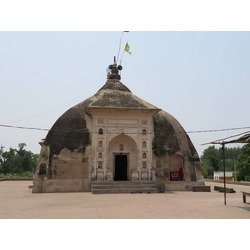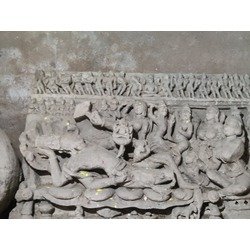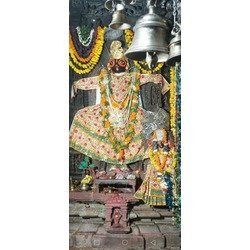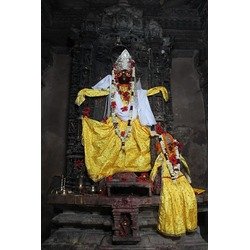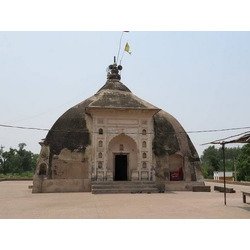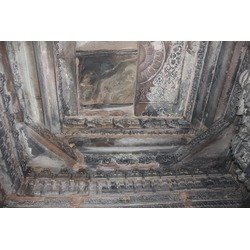Behta Bujurg Jagannath Temple Kanpur
Jagannath temple is at Behta Bujurg near Kanpur in Uttar Pradesh.It is popularly known as ‘Rain Temple’ or ‘Monsoon Temple’ as the drip water appear at the bottom of ceiling above sanctum sanctorum of temple about 6 to 7 days before the rain actually arrives in this area. The concentration of droplets also indicates the intensity of forth-coming rain. Mystery about its ceiling doing forecasting of rain is still unknown.
It is believed that this temple might be constructed during the Gupta empire (c. 319 – 467 C.E, known as golden period of Indian history), or during the reign of Emperor Harshvardhana (606 to 647 CE).
As you approach the temple, its towering structure becomes visible, seemingly larger on the outside than its actual size within. The exterior walls, adorned with a peacock and a wheel symbol, give the temple a unique and mystical aura. But it is the temple’s weather-predicting abilities that have captured the fascination of locals and visitors alike.
Legend has it that the Monsoon Temple of Jagannath possesses the extraordinary power to predict the arrival of the monsoon rains. The temple’s intriguing ability to forecast the weather has been revered by the local community for centuries. As we step into the Garb-Griha, the air is filled with anticipation and curiosity.
Over time, the Behta Bujurg Temple has become renowned for its accurate predictions of the monsoon rains. The temple attracts people from nearby villages and towns, particularly during the monsoon season, as they seek blessings and witness the temple’s weather forecasts come to fruition. It has become a significant cultural and religious landmark in the region, a testament to the enduring faith and intrigue surrounding this ancient site.
Idols of Lord Jagannath, Lord Balabhadra and Devi Subhadra are placed inside sanctum sanctorum. All 10 incarnations (Dashavatar ) of Lord Vishnu have been carved out of black sandstone in the backdrop of main idol.
The area belonged to the Kol-Bhil tribes. It was a dense forest. There was such a power in this particular place where the temple stands today that whoever came here would lose consciousness. Once, while hunting, King Shivi came here and he also fell unconscious. The Kol- Bhils treated him. King Shivi had a dream that if the jungle is cleared and excavation is done, a deity will be found. If a temple is built and that deity is installed, all desires will be fulfilled. The king followed the order he received in the dream.
The temple roof starts leaking a few days before the rain, providing an estimate of the amount of rainfall.
Moisture indicates light rain, while droplets on the roof mean proper rainfall. If the droplets start dripping, it signifies the arrival of good rain, and the canal won’t be dry. Another belief is that this temple is 4200 years old. It managed to survive when Muslim invaders damaged temples across the country, thanks to its secluded location. Worship has continued here since then.
Ancient sculptures of ‘ Sheshsayi Vishnu ‘ and ‘ Suryadev ’ are placed in ante-chambers of temple. A nearby pond also beautifies the temple complex.










